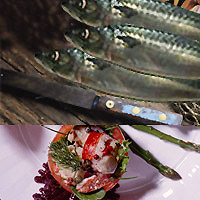Penn Herb Wellness Guide
Mackerel

Varieties
Atlantic mackerel (also called Boston mackerel) is often used in sashimi. Spanish mackerel has only a small percentage of red meat and a milder taste than other kinds of mackerel. King mackerel (also called kingfish or cavalla) has a firm texture and distinct taste. Cero mackerel (also called cerro or painted mackerel), caught in waters along the coast of Florida, has leaner flesh and more delicate flavor than most varieties. Pacific mackerel (also called American, blue, or chub) is an oily fish with an assertive flavor. Pacific jack mackerel (also called horse mackerel) is often canned. Wahoo (also called ono), is a subtropical fish with a delicate flavor; it is often used for sashimi.
Fresh mackerel is sold whole, as fillets, and as steaks.
Copyright 2025 TraceGains, Inc. All rights reserved.
Learn more about TraceGains, the company.
The information presented in the Food Guide is for informational purposes only and was created by a team of USregistered dietitians and food experts. Consult your doctor, practitioner, and/or pharmacist for any health problem and before using any supplements, making dietary changes, or before making any changes in prescribed medications. Information expires December 2025.


